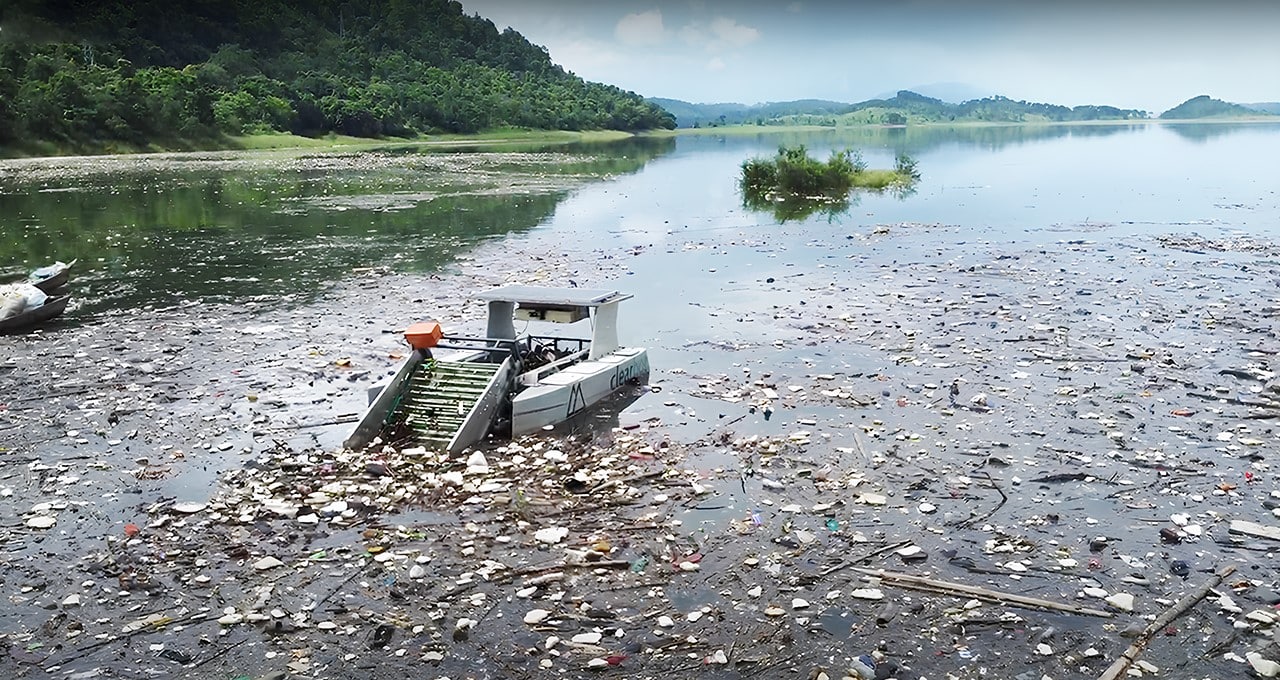What began as a graduation trip idea for two classmates from the University of Hong Kong has transformed into an innovative prototype for an AI-powered boat designed to clean up aquatic environments. This project is built using recycled water bottles, DIY helicopter blades, and a GoPro camera.
Sidhant Gupta and Utkarsh Goel have garnered attention for their creation, Clearbot, which autonomously collects trash from the water with the assistance of NVIDIA Jetson.
Gupta expressed, “We were motivated to create a solution for the polluted beaches there, as the local community relies on clean coastal areas for tourism.” He pointed out that similar pollution issues plague tourist hotspots in Hong Kong and India, where they currently operate.
In 2021, prior to the official launch of Clearbot, the duo showcased their initial waste-collecting boat online but then set it aside to focus on their post-graduation careers. A year later, they partnered with a marine construction firm to tackle a project aimed at cleaning up three tons of waste each day from a construction site in Hong Kong.
“The firm employed a large boat and a team of three to four people daily, costing around $1,000 each day — that’s when we realized we could develop a more efficient and cost-effective solution,” Gupta added.
According to the United Nations Environment Programme, plastics constitute nearly 85% of ocean debris, with approximately 11 million metric tons entering the oceans every year. Clearbot’s mission is to intercept waste before it reaches the sea.
Efficient Cleaning with Jetson Xavier Technology
Operating from bases in Hong Kong and India, Clearbot employs a team of 24 developers dedicated to creating electric-powered boats equipped to self-dock at solar charging stations.
We believe that humanity’s relationship with the ocean is sort of broken — the question is can we make that better and is there a better future outcome? We can do it 100% emissions-free, so you’re not creating pollution while you’re cleaning pollution. Sidhant Gupta, co-founder of Clearbot
The boats, measuring between 10 to 16 feet, are outfitted with dual cameras — one for navigation and another for identifying collected waste. The founders initially trained their waste detection models using cloud and desktop NVIDIA GPUs based on their early image collections, and they have since amassed extensive image libraries from cleanup operations. They have also developed models that allow Clearbot to autonomously maneuver around obstacles.
Thanks to the highly efficient Jetson Xavier NX platform, the battery-operated boats can operate for up to eight hours per charge before returning to dock for a replenishment.
In many busy harbors and waterways, traditional cleanup methods often involve diesel-powered vessels with human crews using nets for waste removal. Gupta notes that typically, a single crew of 50 would manage around 15 to 20 traditional boats, while Clearbot allows the same team to operate approximately 150 vessels, significantly enhancing efficiency.
“We believe that humanity’s connection with the oceans is fractured — the challenge is whether we can mend that and envision a better future. We can achieve this in an entirely emissions-free manner, preventing pollution while addressing the issue,” Gupta emphasized.
Leveraging Clearbot for Environmental Restoration
Kingspan, a building materials manufacturer, is collaborating with Clearbot to eliminate trash and oil from rivers and lakes in Nongstoin, India, resulting in the successful removal of 1.2 tons of waste each month.
Umiam Lake in Meghalaya, India, long favored by tourists and fishers, has suffered from severe pollution, obscuring large sections of the water’s surface with floating debris.
Local authorities are partnering with Clearbot and the University of California Berkeley Haas School of Business to address this problem. Since the initiative launched three months ago, Clearbot has successfully retrieved 15 tons of waste from the lake.
Clearbot’s Role in Environmental Mitigation
Clearbot has expanded its mission beyond simple waste removal to encompass broader environmental concerns. The company is now involved in marine pollution control strategies, addressing issues like sewage, oil, gas, and chemical spills, as well as facilitating underwater inspections for dredging and studying algae dynamics.
Unexpectedly, Clearbot’s founders found that the data collected during waste removal can inform environmental mitigation strategies. Their geotagged images allow authorities to trace back pollution sources. For instance, if a specific area shows a surge in plastic bottle waste, local entities could investigate potential origins based on data from Clearbot’s software dashboard.
“If a municipality wants to enforce a ban on plastic bags, they need support from NGOs, government entities, and advocates to gather hard evidence justifying the closure of a plastic plant upstream,” Gupta explained. “That pertinent data is systematically collected using the NVIDIA Jetson Xavier technology.”
Discover more about NVIDIA Jetson Xavier and Earth-2


